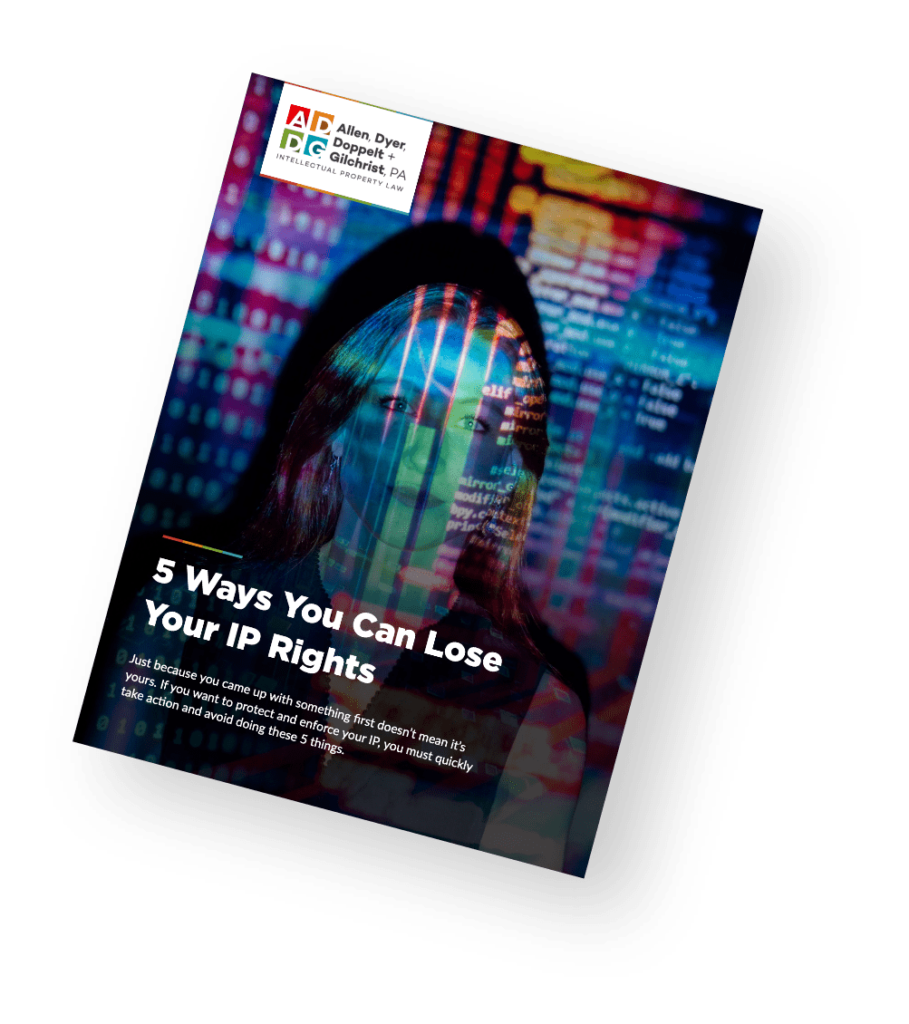- Home /
- Resource Center /
- Trademark FAQs
U.S. Trademark FAQs
A “trademark” is any word, name, symbol or logo adopted and used by a manufacturer or seller to identify its goods or services, distinguish them from those of others, and indicate their source. Trademarks are also called brand names. Examples of trademarks used on goods include “COKE” ™, “FORD” ™, and “APPLE” ™.
The term “trademark” is a general term that is used to cover marks applied both to goods and services. When a distinction is made, the term “service mark” refers to marks used in the sale and advertising of services, such as restaurants and hotels, rather than physical products.
The value of a trademark depends on the degree of recognition and goodwill associated with the mark by the buying public, that is, potential customers of the relevant goods or services. Do your customers recognize the mark and do they identify it with your goods or services, as opposed to the goods and services of others.
The best way to protect a mark, the best way to ensure that people recognize it and give it value, is to begin using the mark properly as a mark as soon as possible in connection with actual sales of your goods or services. As a general rule, the first to use the mark for certain goods or services in a geographic area will have a right of priority over later adopters of the same or similar marks in the same area for similar goods or services.
Trademark law is a branch of the law of unfair competition. It is unfair for someone to pass their products or services off as yours, to trade for free on goodwill you spent time and money establishing, or to try to diminish the value of your mark. Trademarks can therefore be protected even without registration. Registration does provide significant benefits, however, so should be seriously considered.
Without registration, your mark can be protected only in the particular geographic area where you do business, and you have the burden of proving the extent of that area. With U.S. registration, your area of coverage may be extended to the whole country.
And although without a registration, you may still be able to pursue common law unfair competition rights, registration will give you additional statutory rights and remedies against infringers. Moreover, registered marks enjoy many procedural advantages in the courts. For example, instead of having to prove that you own and have a right to use the mark, these preliminary matters will be presumed.
The United States has a dual registration system. This means that you can register your mark with one or more states, or with the federal government, or both. Your mark is eligible for Florida registration as soon as your have sold your goods or advertised your services using the trademark in Florida. Your mark is eligible for federal registration after the mark has been used in interstate commerce (commercial dealings in one or more states, or between two states, or a state and a foreign country).
You may apply to register a mark based on either actual use in interstate commerce, or if you have a bona fide intention to use the mark in commerce. If an application is based on intent to use, actual use must be shown within 6 months after the mark has been approved for registration by the U.S. Trademark Office before the registration will actually issue, unless an extension of time has been obtained.
Federal registration is valid for successively renewable 10-year terms from date of the registration; Florida state registration is valid for renewable 5-year terms. Federal registration will be cancelled unless an affidavit that you are still using the mark (commonly called a “Section 8 Affidavit”) is filed between the fifth and sixth year after registration. A “Section 15 Affidavit” asserting that the mark has been in continuous use for five years, with no adverse decision or pending challenging proceeding, may be filed at the same time to render the mark “incontestable” except on very narrow grounds. There is no affidavit filing requirement for Florida registrations.
To register the mark federally, you must file an application along with prescribed filing fees, identifying the owner of the mark, the goods or services for which the mark is used or will be used, and if the application is based on actual use, the date first use of the mark anywhere, the date of first use of the mark in interstate commerce, and samples of the mark as actually used in connection with the goods and services. The latter three requirements must be met for applications based on intent—only after use in interstate commerce has been made. Registration normally takes 12–24 months for applications based on actual use. Applications based on intent-to-use will take varying amounts of time, depending on the date when actual use is established.
To register the mark with the state of Florida, you must file an application identifying the owner of the mark, the goods or services for which the mark is used, the date of first use of the mark anywhere, the date of first use of the mark in Florida, submit specimens (samples) of the mark as actually used in connection with the goods and services, and pay the required filing fee. Florida state registration can normally be completed in several weeks.
The following steps are generally recommended in pursuing trademark protection:
- Choose a mark that is different from the marks used by others and doesn’t simply describe the goods or services.
- Have an initial interview with a reputable Florida trademark attorney to gain valuable insights into the best ways to use and protect your mark.
- Consider doing a pre-adoption or “clearance” search to identify other users of similar marks, both from a defensive view (to insure that you will not infringe another’s mark) and from an offensive view (to insure that your mark is sufficiently different, so that you will be able to build rights in it that can be asserted against others). A typical search will include a review of federal and state trademark registrations, applications, and internet searches. The search is, of course, only as good as what can be found, and no matter how extensive or expensive the search, there is always a chance that an undiscovered prior user will crawl out of the woodwork later on. The chance of adopting someone else’s mark is, however, enormously greater if you don’t do a search at all. (Note: availability of a name for incorporation purposes or registration of a fictitious name does not give you the right to use that name if it is deceptively similar to the mark of another for similar goods or services.)
- Adopt and use the mark on the goods or in advertising the services in actual commercial transactions.
- Keep records that will show adoption of the mark for each class of goods, the manner of use, and dates of first use anywhere, first use in each state, and first use in interstate commerce. It is a good idea to keep copies of invoices or other sales records, advertisements and other promotional materials, as well as receipts showing monies spent.
- Use the mark consistently, in proper trademark style, as a brand name and not as the name of the product or service itself.
- Where it does not unduly detract from the mark, use a superscript “™” or similar designation next to the mark as notice that you intend to assert rights in the mark. You may not use the “®” (“R” inside of a circle) designation in the absence of federal registration.
- To improve your legal position with respect to a particular mark, apply for federal registration as soon as you can, and apply for at least one state registration as an interim additional protection measure.
- Police the mark to be sure it is being used properly and only by authorized users.The information included herein is for informational purposes only. The Firm does not intend to create an attorney-client relationship with you by providing this information.The fees that a lawyer will charge for a particular trademark matter will depend upon various factors such as the complexity of the search involved and the number of classes in which the mark is to be registered. We can provide a more specific estimate upon discussing the desired mark and the product/service area(s) for which the mark is used. Please contact us to start the trademark application process in the United States.
PLEASE NOTE: The information included herein is for informational purposes only. The Firm does not intend to create an attorney-client relationship with you by providing this information.



